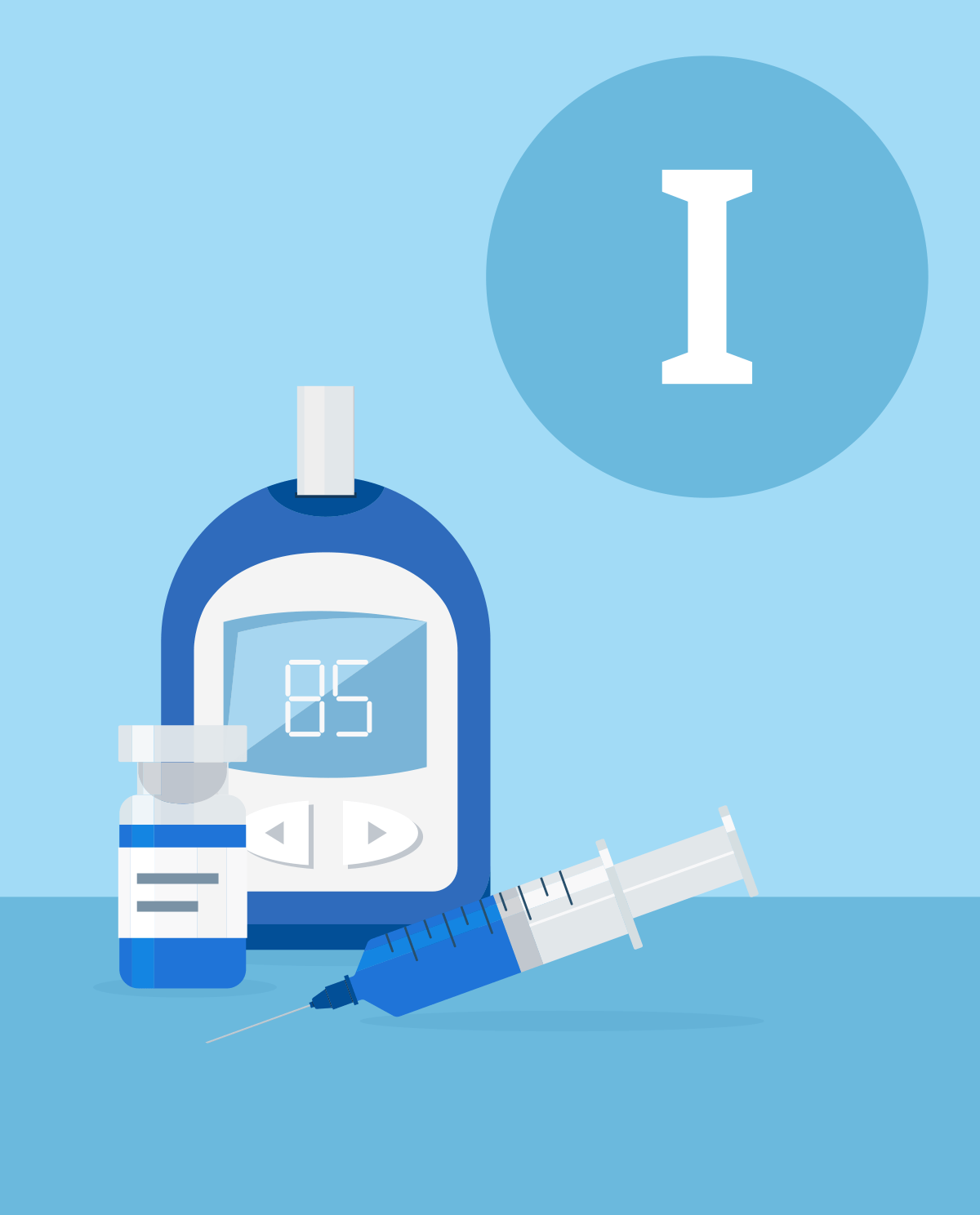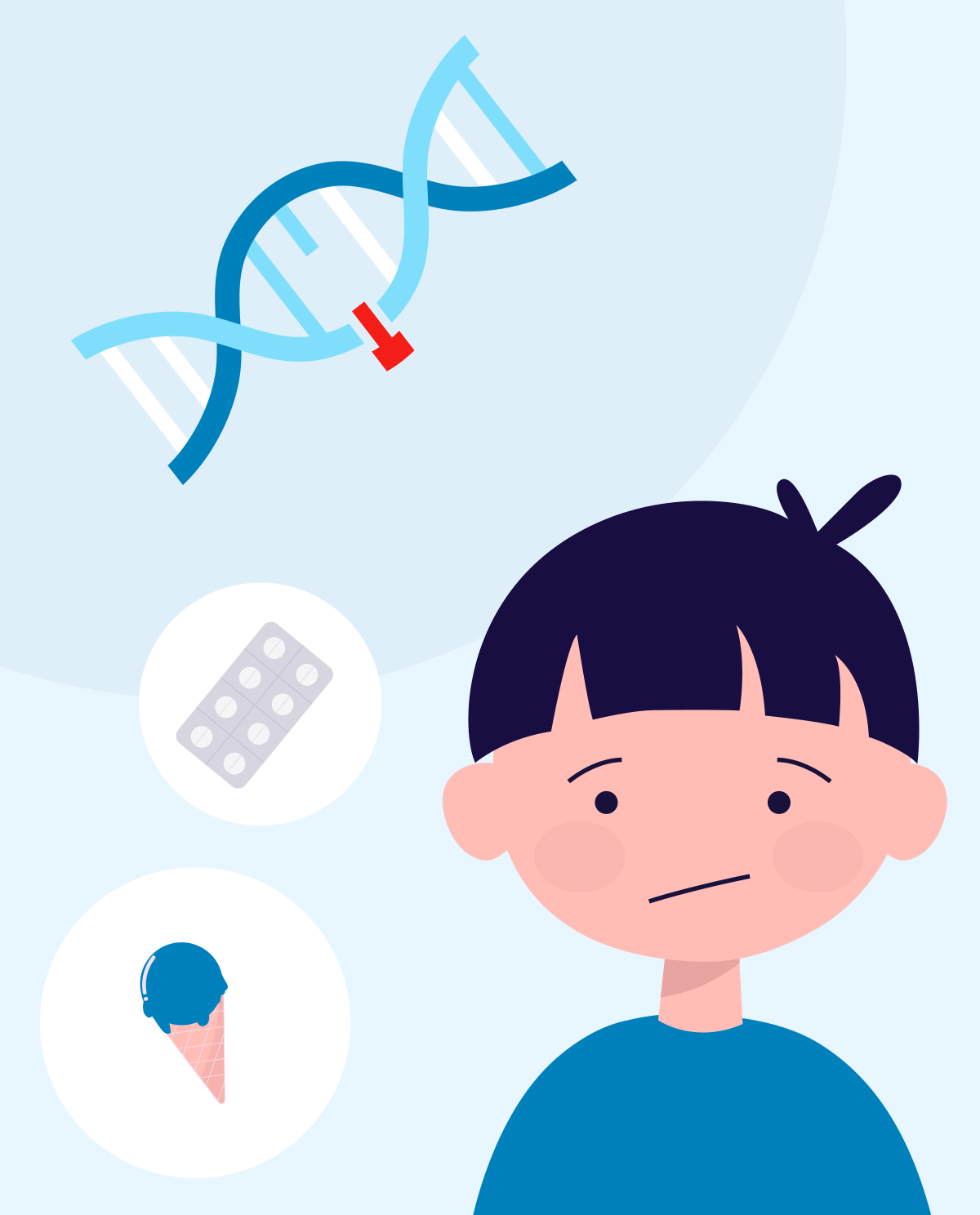What is LADA?
LADA (latent autoimmune diabetes in adults) is late-onset autoimmune diabetes, as is the case in type 1 diabetes, except that it occurs in adults. The cause of the disease is the destruction of the insulin-producing beta cells of the pancreas through its own immune system. The disease develops slowly, therefore hyperglycemia gradually increases, similar to that in type 2 diabetes. However, when most of the pancreatic beta cells are already destroyed, the patient must start therapy with insulin. Due to the similarities both to type 1 and 2 diabetes, LADA is very often diagnosed late. It is estimated that the disease affects 5 to 10% of people who were misdiagnosed with type 2 diabetes.
How is LADA different from type 1 diabetes?
- The process of destruction of the pancreatic beta cells in the case of LADA is slow and can last up to several years. In type 1 diabetes, it is rapid and the full-blown disease develops within a few weeks, up to several months.
- Type 1 diabetes always has severe symptoms. However, the form of diabetes known as LADA can be asymptomatic for a very long time because it is usually accompanied by slight or moderate hyperglycemia.
- LADA is diagnosed in adult patients, usually between 35 and 50 years of age, although, it may also occur in older people. Type 1 diabetes is diagnosed mainly in children, adolescents and young adults.
What are the similarities between LADA and type 2 diabetes?
- LADA, like type 2 diabetes, does not have any symptoms for a long time or they are very mild. It is often detected accidentally, during prophylactic examinations.
- LADA is diagnosed in adults and seniors, similar to type 2 diabetes.
- LADA requires insulin therapy, as is the case with insulin resistance in type 2 diabetes.
How can we distinguish between LADA and type 2 diabetes?
- Although hyperglycemia in both LADA and type 2 diabetes increases slowly, it is the result of completely different causes. In the first case it is an autoimmune process, in which the cells producing insulin are slowly destroyed, in the second, insulin resistance occurs.
- LADA is most often diagnosed in people with a normal body weight or in those who are slightly overweight, who do not have hypertension, lipid disorders or a genetic susceptibility towards diabetes.
- LADA often appears as another autoimmune disease (after celiac disease, Hashimoto's disease, rheumatoid arthritis, lupus erythematosus, etc.).
Symptoms of LADA
The symptoms of LADA are similar to those of type 2 diabetes and include:
- increased thirst,
- frequent urination,
- weight loss, despite increased appetite,
- drowsiness and fatigue after a meal,
- blurred vision,
- nausea and vomiting.
LADA is a form of diabetes which develops slowly, and therefore the symptoms may initially go unnoticed.
Diagnostics of LADA
In the diagnosis of LADA, basic research is used at the beginning to determine whether or not blood glucose levels are elevated. Research is likely to include:
- accidental glycemia,
- fasting glucose,
- OGTT oral glucose tolerance test.
After this, you should be able to exclude the possibility of an incorrect diagnosis of type 2 diabetes. Some studies show that LADA may remain undiagnosed even in more than 50% of people who have type 2 diabetes not related to obesity (although it is worth remembering that not everyone with LADA is slim). All adults who are not obese and who have been diagnosed with diabetes should consider:
- glutamic acid decarboxylase (GADA) antibodies,
- Antinuclear antibodies (ICA),
- insulinoma-associated antibodies (IA-2),
- antibodies against the zinc transporter (ZnT8).
Criteria for the diagnosis of LADA
LADA is defined and thus distinguished from other types of diabetes thanks to the following features:
- onset of illness between 30 and 50 years of age,
- no obesity, sometimes even weight loss,
- the presence of at least one autoantibody typical of type 1 diabetes mellitus,
- no need for insulin treatment in the first few months (less often) than getting ill (possibility of treatment with diet and oral agents),
- additional autoimmune disease associated with DR3 and/or DR4,
- an autoimmune disease associated with family history of DR3 and/or DR4,
- positive anti-GAD antibody titer.
Treatment of LADA
Due to the fact that the LADA form of diabetes develops slowly, patients are initially advised to eat a diabetic diet, do moderate exercise and take oral diabetic medications. This usually allows for proper control of the disease, in the first phase of the disease.
Unfortunately, as a result of the disease, the cells of the pancreas responsible for secretion of insulin are constantly destroyed and at some point the patient's body no longer produces its own insulin. It is then necessary to switch from oral antidiabetic drugs to insulin. In order to be able to capture this moment early, regular visits to the diabetes clinic are necessary.
Recent research shows that the implementation of insulin therapy in a patient right after diagnosing LADA can slow down the process of pancreatic beta cell destruction. This would allow for longer insulin secretion by pancreatic cells, and therefore it would also be easier to obtain metabolic compensation for diabetes. Doing so would avoid acute complications such as ketoacidosis.
However, be aware that this type of therapy is still in the research phase. There is still a lack of data on the long-term effects of early or delayed onset of insulin therapy in the treatment of LADA-type diabetes.
- Interna Szczeklika 2018 Handbook of Internal Diseases, Authors: Piotr Gajewski, Andrzej Szczeklik Publisher: Medycyna Praktyczna
- Collective work, Carbohydrate metabolism disorders [in:] Andrzej Wojtczak (ed.), Internal diseases, ed. II amended, Warsaw: PZWL Medical Publishing, 1995
- http://www.mp.pl
- https://www.mp.pl/pacjent/
- https://apteline.pl/cukrzyca/artykuly/cukrzyca-typu-lada/
- M. Landin-Olsson, Latent autoimmune diabetes in adults, "Annals of the New York Academy of Sciences", 958, 2002
- Diabetes mellitus. A guide to patient care, Lippincott Williams & Wilkins
- https://journals.viamedica.pl/clinical_diabetology/article/viewFile/8441/7202
- https://www.mp.pl/cukrzyca/cukrzyca/typ1/65896,cukrzyca-typu-1-lada
- http://www.czytelniamedyczna.pl/4369,cukrzyca-typu-lada-to-znaczy.html
- https://diabetyk24.pl/blog-section/cukrzyca-typu-LADA-co-ja-odroznia-od-cukrzycy-typu-1-i-2








